Do you have a question about the YOKOGAWA EJX110A and is the answer not in the manual?
Details on the manual's purpose, scope, rights, and usage guidelines.
Crucial safety instructions for operating the instrument and system.
Details concerning the warranty period and conditions for repair.
Information on ATEX documentation availability for EU countries.
Verification of the transmitter's model name and specifications via the name plate.
Guidelines for choosing an optimal installation site considering environmental factors.
Critical warnings and precautions for making pressure connections to the transmitter.
Specific procedures and warnings for installing explosion-protected instruments.
Details on FM approval for intrinsically safe and nonincendive types of transmitters.
Information on CSA certification for intrinsically safe, nonincendive, and explosionproof types.
Technical data and requirements for ATEX certification types.
Details on IECEx certification for various hazardous location types.
Instructions for mounting the transmitter on a pipe using the supplied bracket.
Important considerations and procedures for installing diaphragm seals.
Key points for correct diaphragm seal installation, especially for tank level measurement.
Procedure for mounting the flushing connection ring to the pressure detector section.
Steps for applying the Teflon film and fluorinated oil before mounting.
Instructions on how to rotate the transmitter section for optimal positioning.
Procedure for changing the orientation of the integral indicator.
General precautions for installing impulse piping to ensure accurate pressure measurement.
Guidelines for routing impulse piping based on fluid type and process conditions.
Typical examples of impulse piping connections for various transmitter types.
Essential precautions to follow during wiring to ensure safety and performance.
Detailed wiring connections for different output types and terminal configurations.
Instructions for connecting the power supply to the transmitter.
Procedures for connecting RTD cables for external temperature measurement.
Requirements and methods for proper grounding of the transmitter.
Guidelines for selecting power supply voltage and load resistance for the loop.
Steps to confirm the transmitter is operating properly before starting.
Procedures for adjusting the zero point of the transmitter.
Instructions for setting transmitter parameters locally using buttons and screws.
Summary of alarm messages, causes, output operations, and countermeasures.
Details on the manual's purpose, scope, rights, and usage guidelines.
Crucial safety instructions for operating the instrument and system.
Details concerning the warranty period and conditions for repair.
Information on ATEX documentation availability for EU countries.
Verification of the transmitter's model name and specifications via the name plate.
Guidelines for choosing an optimal installation site considering environmental factors.
Critical warnings and precautions for making pressure connections to the transmitter.
Specific procedures and warnings for installing explosion-protected instruments.
Details on FM approval for intrinsically safe and nonincendive types of transmitters.
Information on CSA certification for intrinsically safe, nonincendive, and explosionproof types.
Technical data and requirements for ATEX certification types.
Details on IECEx certification for various hazardous location types.
Instructions for mounting the transmitter on a pipe using the supplied bracket.
Important considerations and procedures for installing diaphragm seals.
Key points for correct diaphragm seal installation, especially for tank level measurement.
Procedure for mounting the flushing connection ring to the pressure detector section.
Steps for applying the Teflon film and fluorinated oil before mounting.
Instructions on how to rotate the transmitter section for optimal positioning.
Procedure for changing the orientation of the integral indicator.
General precautions for installing impulse piping to ensure accurate pressure measurement.
Guidelines for routing impulse piping based on fluid type and process conditions.
Typical examples of impulse piping connections for various transmitter types.
Essential precautions to follow during wiring to ensure safety and performance.
Detailed wiring connections for different output types and terminal configurations.
Instructions for connecting the power supply to the transmitter.
Procedures for connecting RTD cables for external temperature measurement.
Requirements and methods for proper grounding of the transmitter.
Guidelines for selecting power supply voltage and load resistance for the loop.
Steps to confirm the transmitter is operating properly before starting.
Procedures for adjusting the zero point of the transmitter.
Instructions for setting transmitter parameters locally using buttons and screws.
Summary of alarm messages, causes, output operations, and countermeasures.
| Model | EJX110A |
|---|---|
| Category | Differential Pressure Transmitter |
| Stability | ±0.1% of URL per 10 years |
| Ambient Temperature Limit | -40 to 85 °C (-40 to 185 °F) |
| Operating Temperature | -40 to 85 °C (-40 to 185 °F) |
| Storage Temperature | -40 to 85 °C (-40 to 185 °F) |
| Output Signal | 4 to 20 mA, HART |
| Response Time | 90 ms (typical) |
| Process Connection | 1/2 NPT, 1/4 NPT |
| Process Temperature Limit | -40 to 120 °C (-40 to 248 °F) |
| Material | Hastelloy C276, 316L SST |
| Protection Rating | IP67 |
| Relative Humidity | 0 to 100% RH |
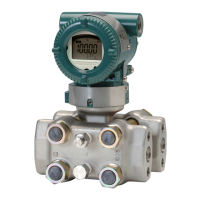
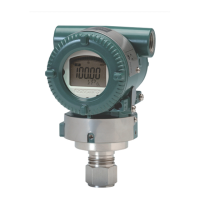
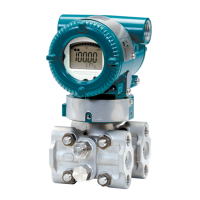
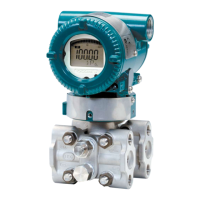
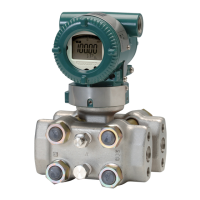



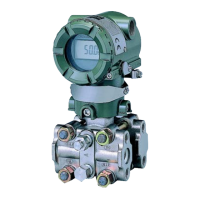

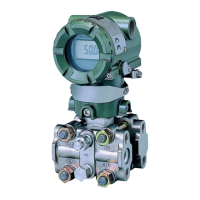

